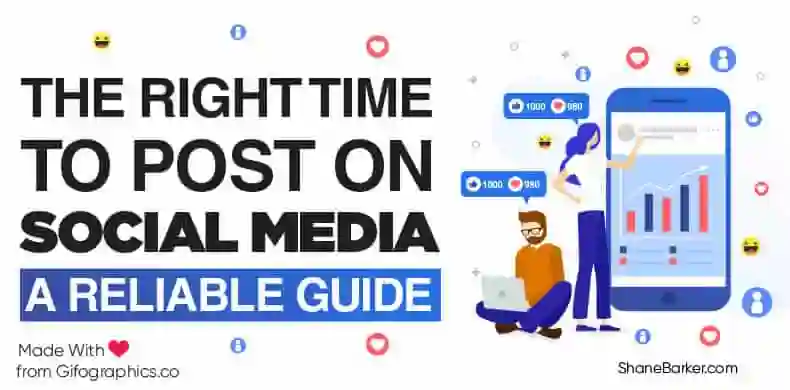
Post Smart, Not Hard: A Deep Dive into Social Media Timing
In the era of social media domination, crafting an effective posting strategy can be the difference between success and obscurity. It’s not about how often you post but when you post. “Post Smart, Not Hard” is a mantra that reflects the growing understanding that timing plays a pivotal role in social media success. In this article, we’ll delve into the intricacies of social media timing and explore how it can help you maximize engagement and reach.
The Power of Timing in Social Media
Timing is a critical element in the social media landscape. Here’s why it holds such importance:
1. Algorithm Optimization
Social media platforms employ complex algorithms to determine what content appears on users’ feeds. Posting at strategic times, when your audience is most active, can increase the likelihood of your content being prioritized and seen.
2. Audience Engagement
Different demographics and segments of your audience may have distinct online habits. Understanding when your specific audience is most active allows you to tailor your posting schedule to engage them when they are most likely to interact with your content.
3. Competitive Edge
Analyzing the posting habits of your competitors can help you identify opportunities to outperform them. Posting during off-peak times when your competitors are less active can give your content a competitive edge and capture the attention of your shared audience.
4. Global Outreach
For individuals and brands with a global following, finding the right posting times is crucial. Posting at optimal times ensures that your content reaches different time zones effectively, maximizing your global reach and impact.
The Science Behind Social Media Timing
Creating an effective social media timing strategy involves understanding your audience, analyzing platform-specific patterns, and staying adaptable. Here’s how to go about it:
1. Know Your Audience
Understanding your audience is the foundation of any successful social media timing strategy. Consider these factors:
- Demographics: Age, location, and profession can influence your audience’s online behavior.
- Behavioral Patterns: Use analytics tools to track when your audience is most active on each platform.
- Feedback and Surveys: Engage with your audience to gather insights into their preferred online hours.
2. Platform-Specific Timing
Different social media platforms have unique peak times based on user behavior. Here are some general guidelines:
- Facebook: Weekdays, especially during lunch breaks and early afternoons.
- Instagram: Weekdays, with a focus on Tuesday and Thursday, around 11 AM and 1 PM.
- Twitter: Weekdays, around lunchtime (noon to 1 PM) or later in the afternoon (3 PM to 4 PM).
- LinkedIn: Weekdays during business hours, particularly Tuesday, Wednesday, and Thursday.
While these are general recommendations, your specific audience and industry may require adjustments, so be sure to analyze your own data.
3. Experiment and Analyze
Don’t hesitate to experiment with different posting times and measure the engagement metrics of your posts. A/B testing can help you determine what works best for your unique audience. Regularly analyze the data to identify patterns and trends.
4. Content Type and Timing
Different types of content may perform better at specific times of the day:
- Educational and Informative Posts: Mornings when people are in a learning mindset.
- Entertaining Content: Evenings and weekends when users are more relaxed.
- Interactive Content: Polls, quizzes, and questions can gain more traction during midday breaks when users have time to engage.
5. Adapt to Time Zones
For those with a global audience, managing time zones is crucial. Here’s how to address this challenge:
- Identify Key Markets: Determine where the majority of your audience resides.
- Use Scheduling Tools: Leverage social media scheduling tools to automate posts according to different time zones.
- Create a Balanced Schedule: Aim for a posting strategy that caters to various time zones without overwhelming any specific audience segment.
6. Consistency and Flexibility
Maintain a consistent posting schedule to build anticipation among your audience. However, be flexible and open to adapting your strategy as audience behavior evolves and new trends emerge.
Conclusion
“Post Smart, Not Hard” encapsulates the idea that timing is a critical factor in social media success. It’s not about bombarding your audience with content; it’s about strategically delivering your message when they are most active and receptive. By understanding your audience, analyzing platform-specific timing, experimenting, considering content types, adapting to time zones, and staying flexible, you can create a social media timing strategy that ensures your content stands out in the dynamic world of social media.
Timing isn’t just about posting when most people are online; it’s about reaching your specific audience when they are most engaged. With a thoughtful, data-driven approach to timing, you can maximize your social media success, leading to higher engagement, broader reach, and a more significant impact in the fast-paced world of social media.